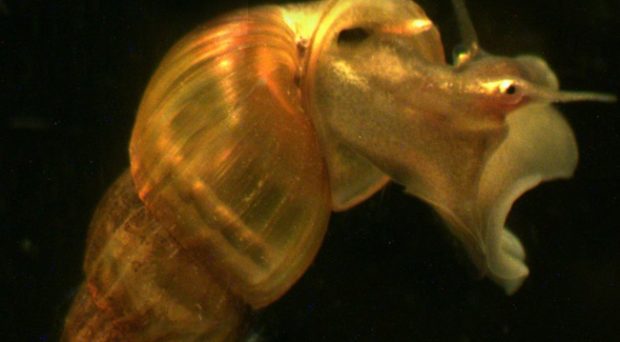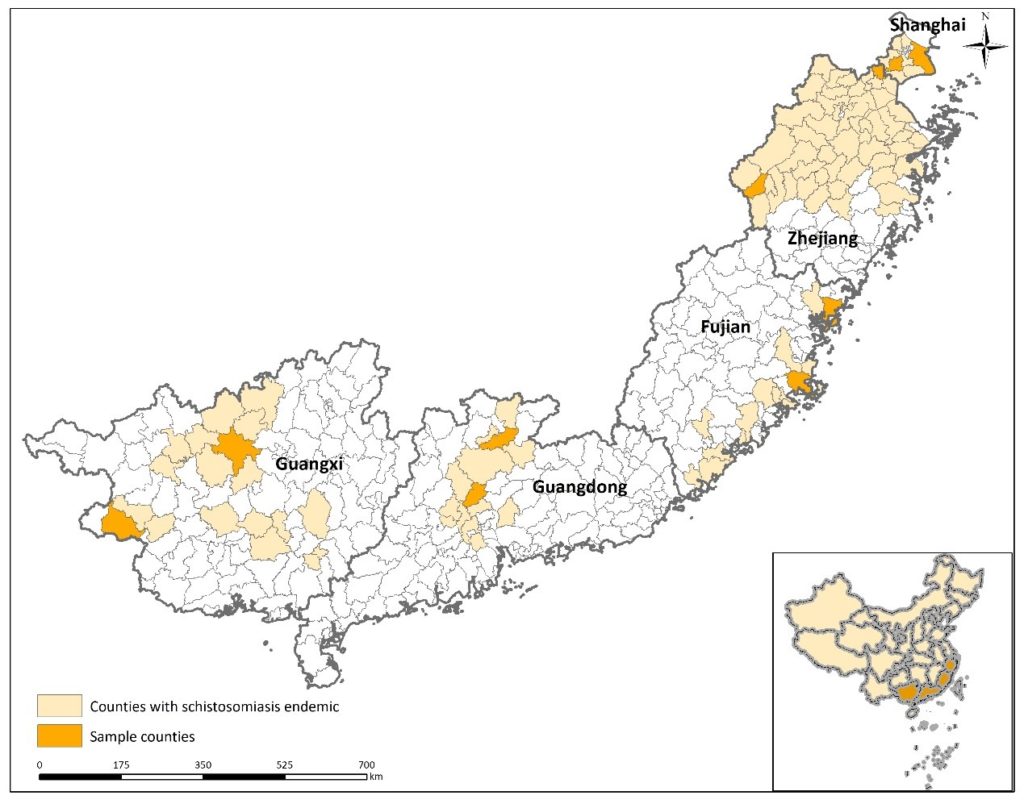
In the 1950s, there were about 12 million people and 1.2 million total cattle infected with schistosomes, and over 100 million people at risk of infection in China. Following several decades of unremitting efforts on schistosomiasis control, Guangdong (1985), Shanghai (1985), Fujian (1987), Guangxi (1989) and Zhejiang (1995) successfully eliminated schistosomiasis in China. After achieving this, these five provincial-level administrative divisions (PLADs) entered the stage of surveillance.
In our research, recently published in Infectious Diseases of Poverty, we addressed the surveillance progress and capabilities of these five PLADs: epidemic situation of schistosomiasis, diagnostic capacitiy, ability to identify Oncomelania hupensis (the unique intermediate host of Schistosoma japonicum), and knowledge of schistosomiasis prevention and control.
Elimination of schistosomiasis is regarded as an achievable goal in endemic regions or countries if continuous interventions and adequate resources are provided. However, schistosomiasis easily rebounded or spread to new areas due to weakened interventions, ecological changes caused by flooding, construction works for water conservancy projects, increased migration of goods or human resources etc., without a thorough surveillance and response system.
As Shanghai, Guangdong, Fujian, Guangxi and Zhejiang eliminated schistosomiasis at least 20 years ago, we evaluated the epidemic situation and the surveillance capabilities on schistosomiasis among the five PLADs, to facilitate the consolidation of elimination achievements in post elimination era, and provide reference for other regions where schistosomiasis had been eliminated or will be eliminated.
Our goal was to understand the epidemic situation in these post-elimination areas and their surveillance capabilities on schistosomiasis. To do this, we collected annual data reflecting the interventions and surveillance on humans, cattle and snails based on county level from 2005 to 2016, through the national schistosomiasis reporting system, and we analyzed data to understand the epidemic status of schistosomiasis in the five PLADs.
In addition, we designed a standardized score sheet to assess the surveillance capacity on schistosomiasis among selected disease control agencies in five PLADs and ten counties. We evaluated the surveillance capacity including schistosomiasis diagnostic skills, identification of snails living and infection status and knowledge about schistosomiasis and its control.
Shanghai and Zhejiang are located in the Yangtze River Delta, in the east of China. Fujian, Guangdong and Guangxi are located in the south of China. According to the epidemiological characteristics, the endemic areas in Shanghai belong to waterway network regions, while the endemic areas in Zhejiang, Guangdong, Guangxi and Fujian are mainly hilly and mountainous regions.

Results
The results showed that no local cases in humans and cattle or infected snail were found in the five PLADs since 2005. However, from 2005 to 2016, a total of 221 imported cases were detected in Zhejiang, Shanghai and Fujian, and 11.98 hm2 of new snail habitats were found in Zhejiang, Shanghai and Guangxi. In addition, snail infestation reoccurred in 247.55 hm2 of former snail habitats since 2011.
For the surveillance capacity assessment, the accuracy rate of indirect hameagglutination assay and the miracidia hatching technique were 100% and 89.3%, respectively. All participants could judge the living status of snails accurately and 98.1% on the infection status of snails. The accuracy rate of the questionnaire survey was 98%.
We found elimination of schistosomiasis was consolidated successfully in five PLADs of P. R. China due to effective and strong post-elimination surveillance. Comprehensive consolidation strategies should be focused on the elimination of residual snails and the prevention of imported infection sources, in order to reinforce the achievements of schistosomiasis control in the five PLADs.
Being schistosomiasis a zoonotic parasitic disease, challenges still exist to maintain the achievements as imported cases and snail habitats were detected. Continuous surveillance should be strengthened through capacity building for staff responsible for schistosomiasis surveillance, providing adequate funding and resources.
Comments